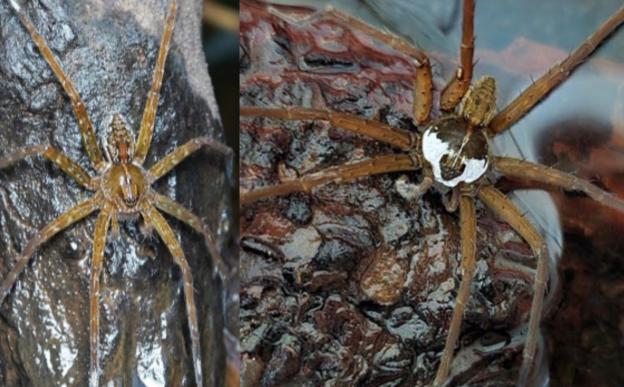Some details of the reproductive journey of a fig wasp, to find a suitable tree and lay eggs while simultaneously pollinate it in the process are known. In a recent study, scientists from the Indian Institute of Science, Bangalore, fill in the gaps in our knowledge about this fascinating journey.
Image: Dolomedes indicus, Adult Female (left) and adult male (right). Credit: Authors https://doi.org/10.1038/s41598-025-26308-2
Wayanad/

